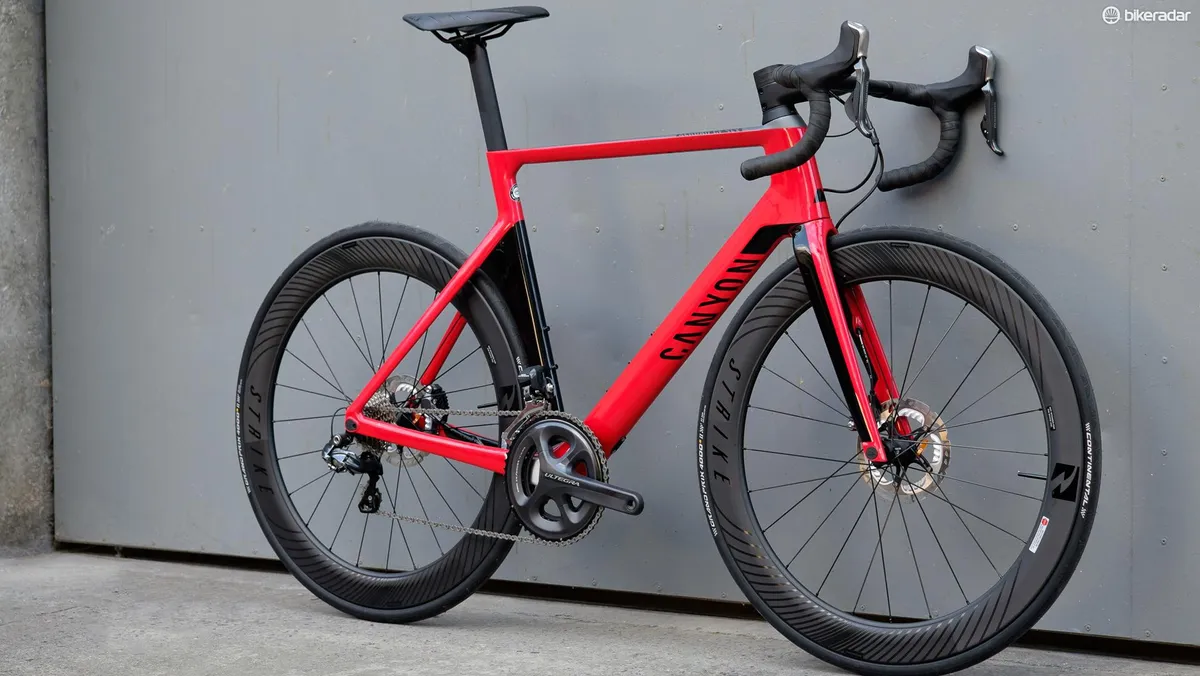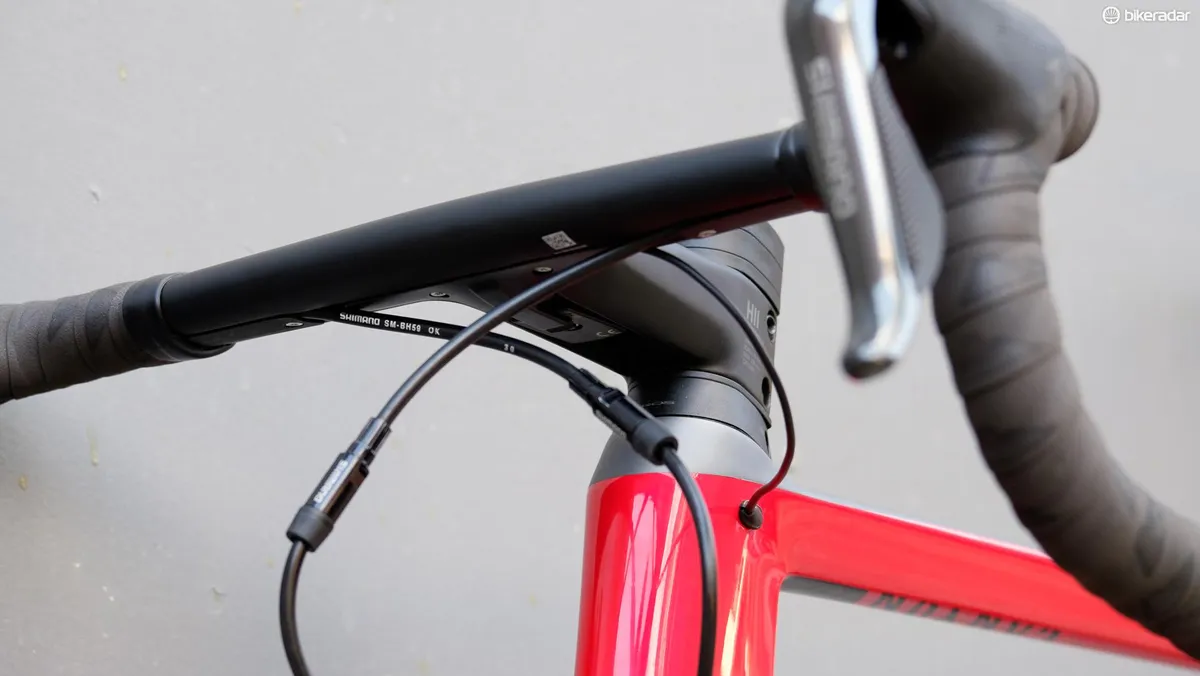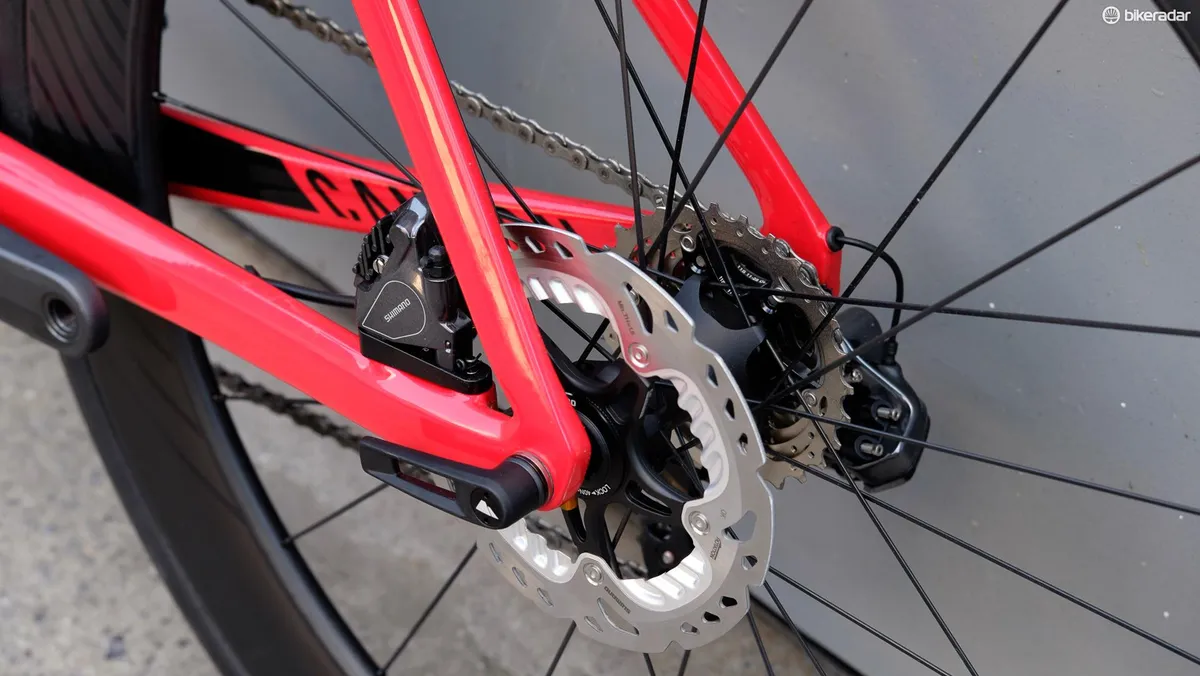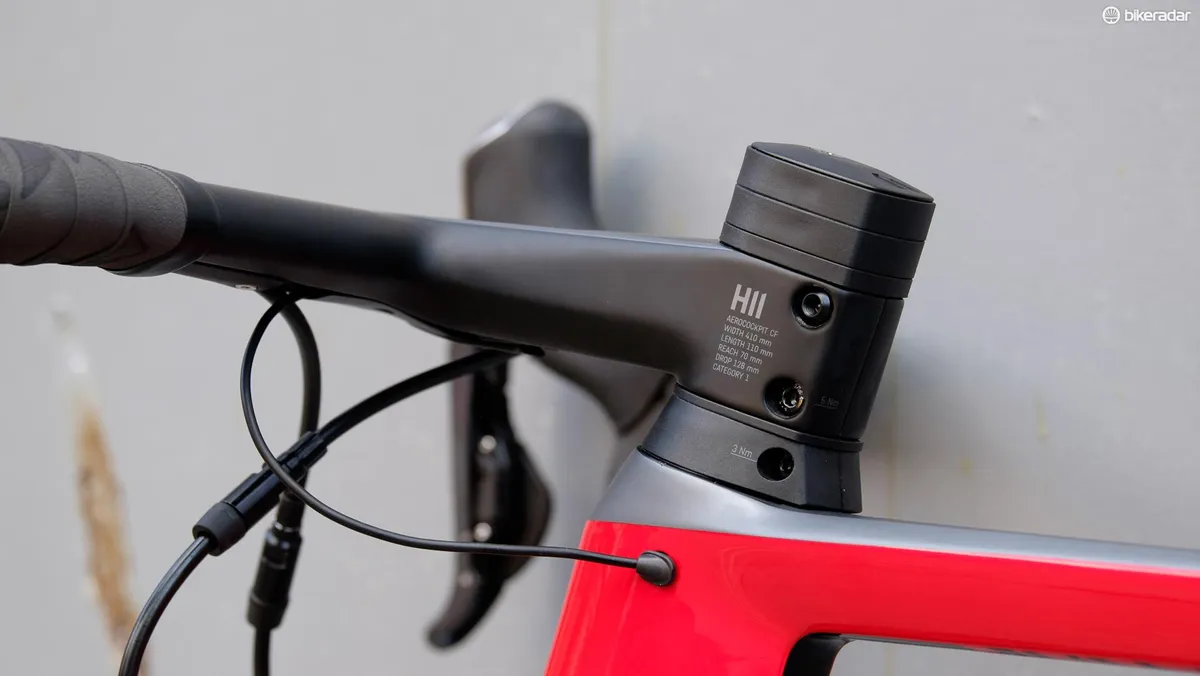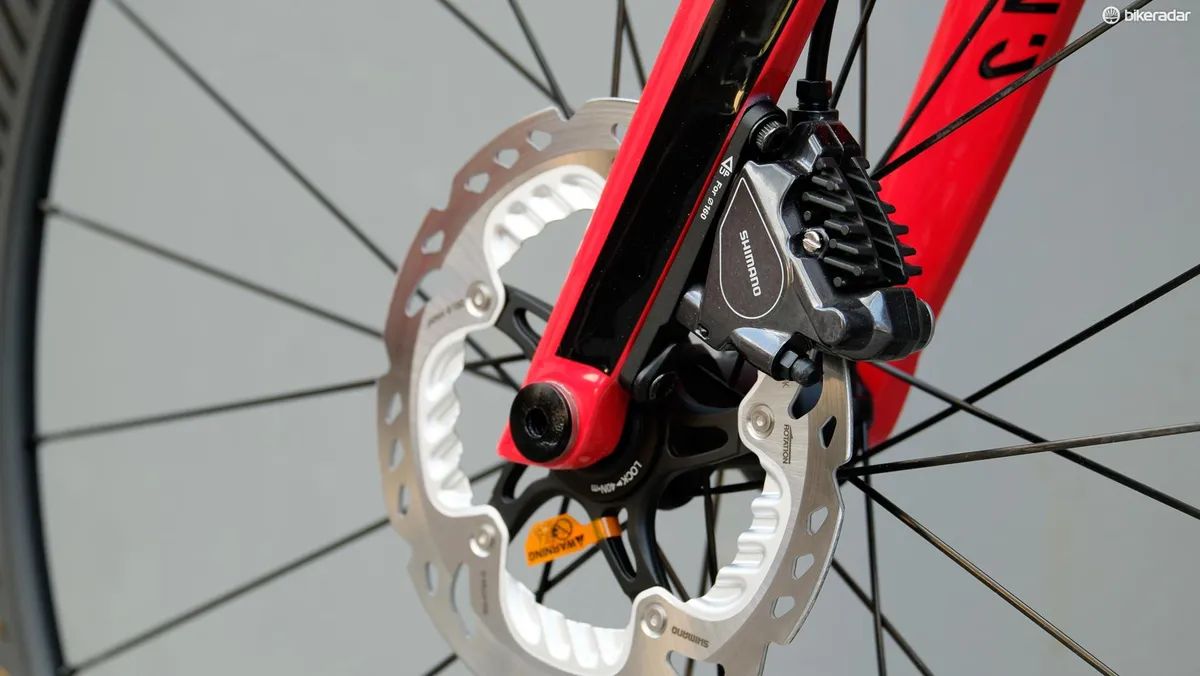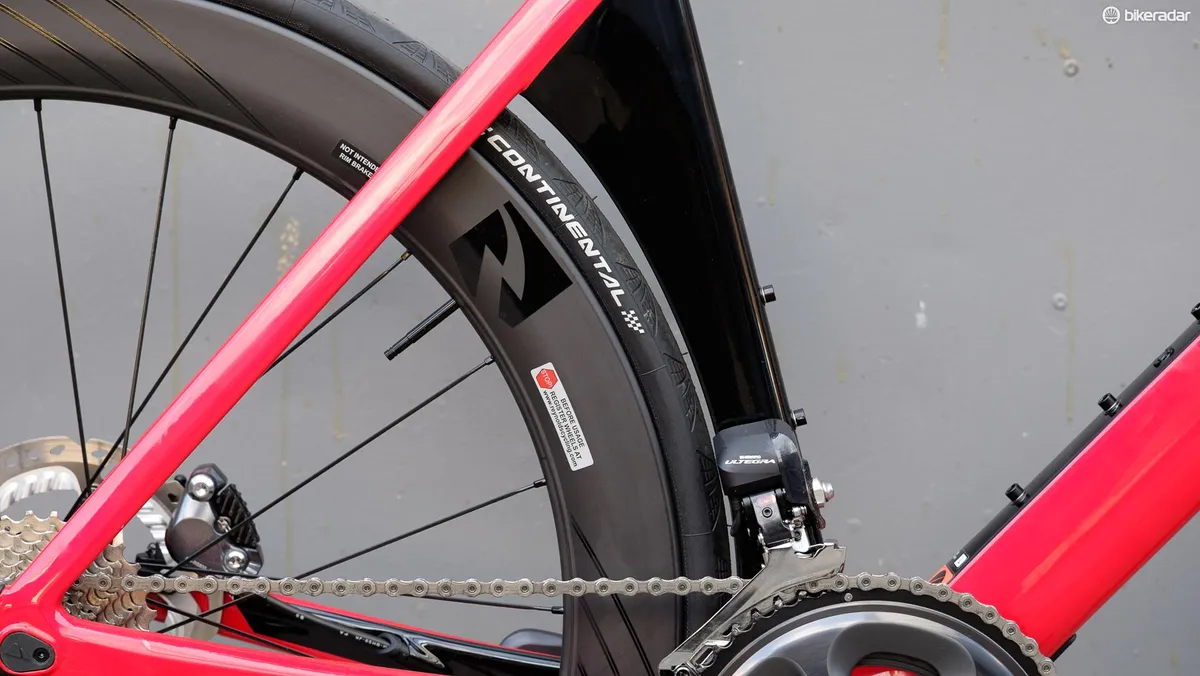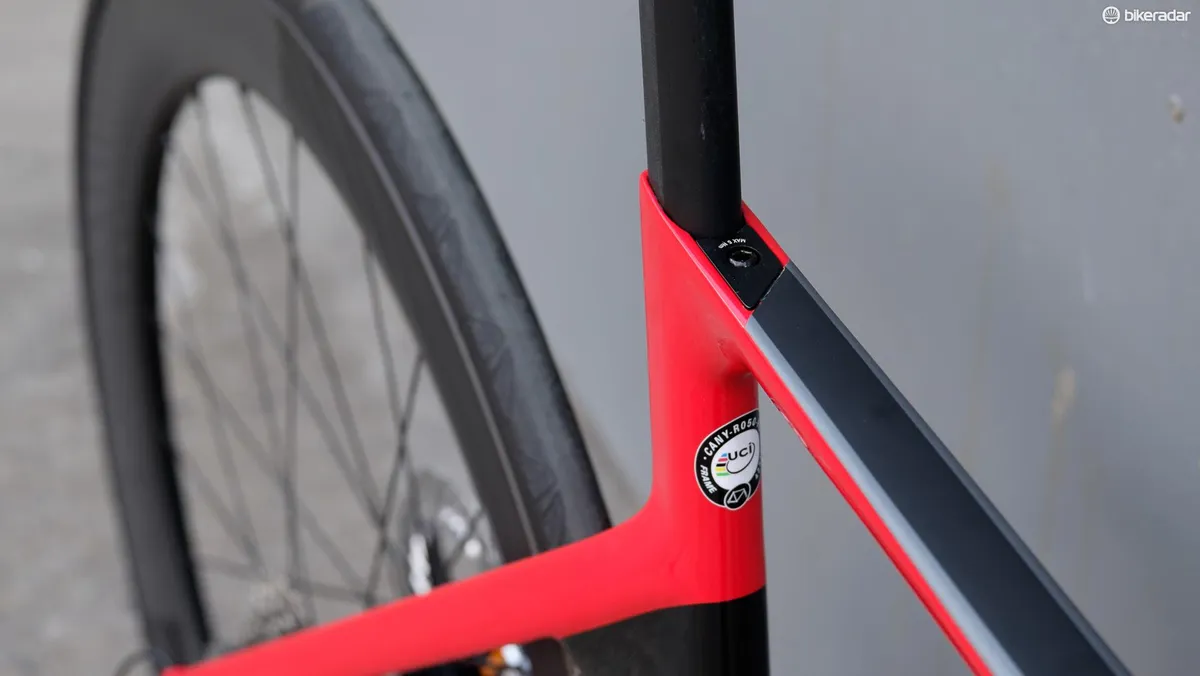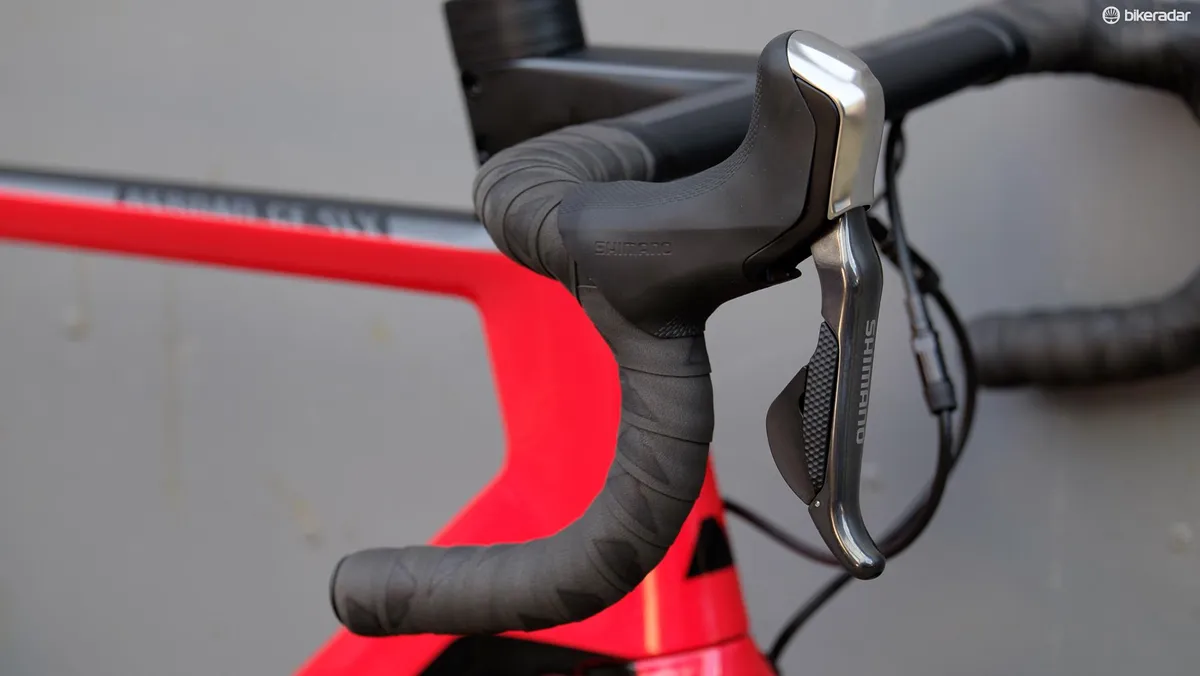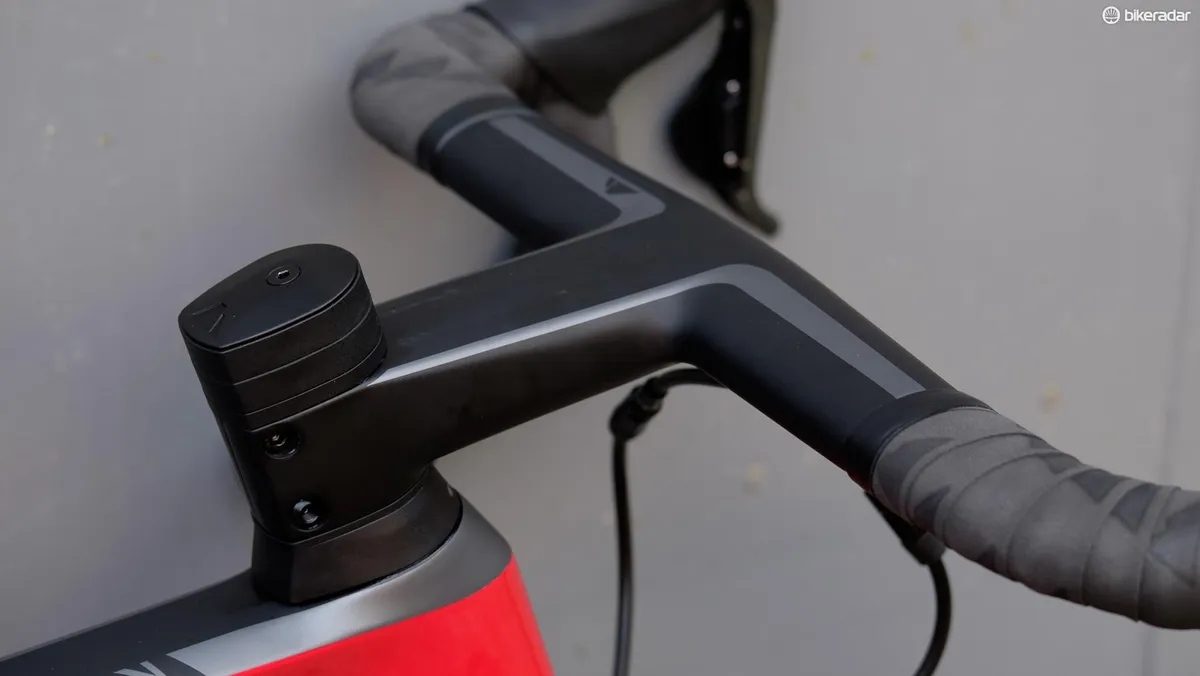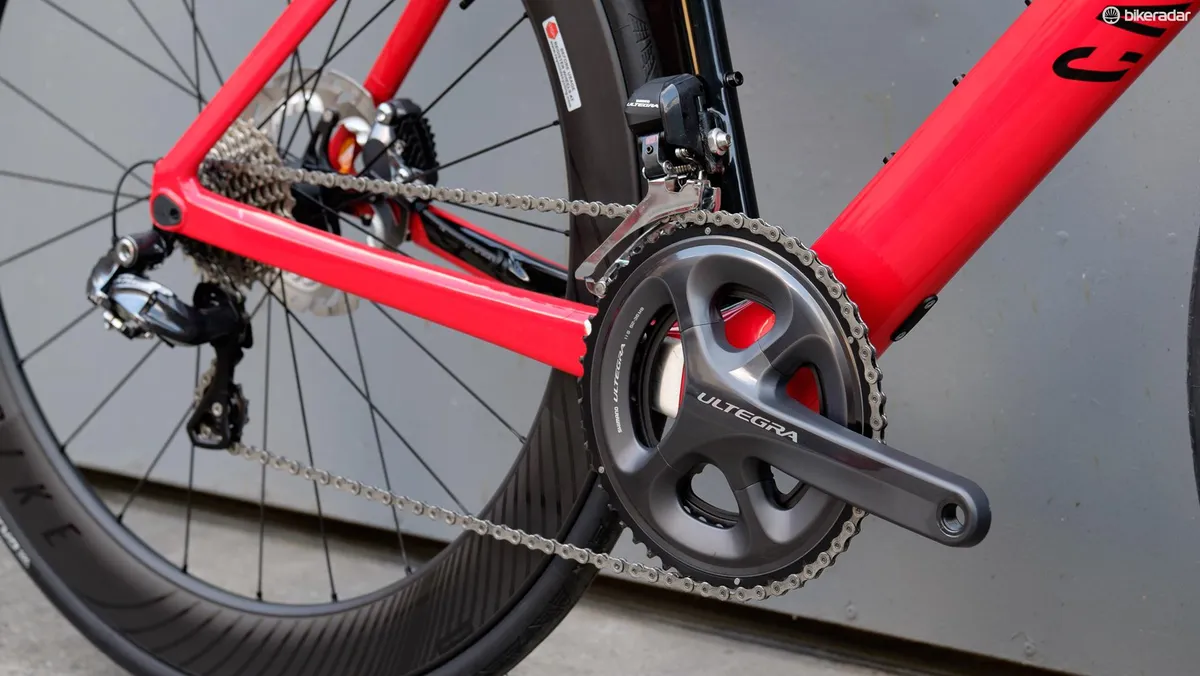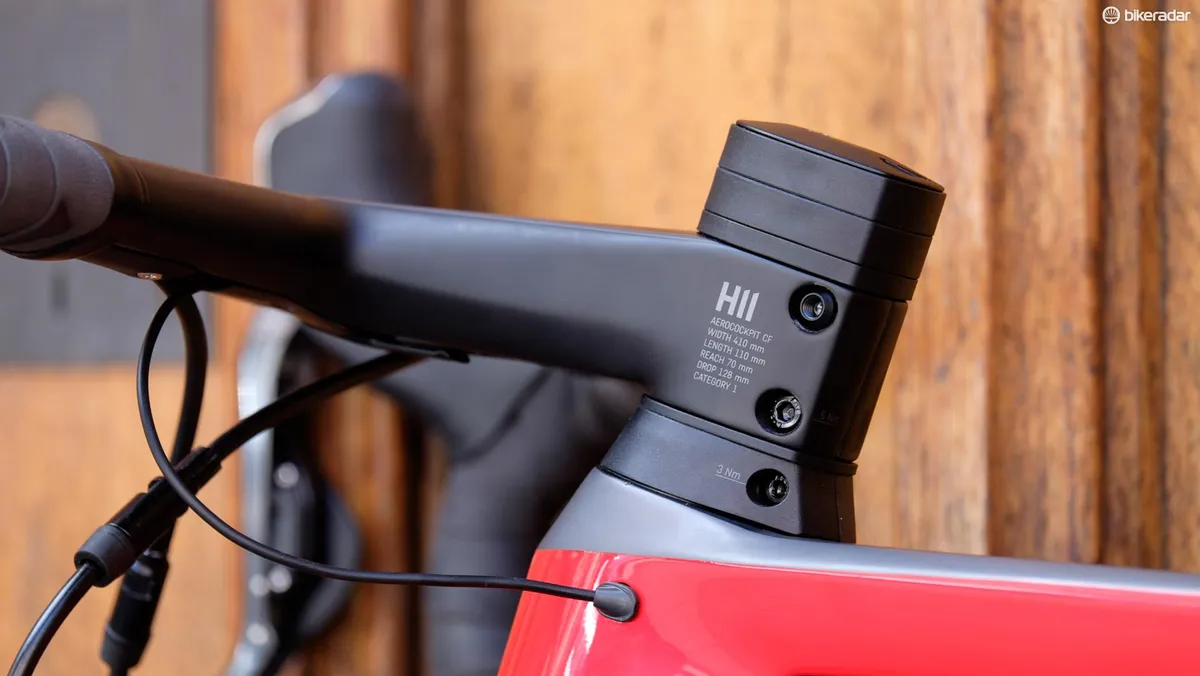Earlier this year, Canyon took the decision to develop disc brake versions for each of its road bike lines, and so it was only a matter of time before we got our hands on a disc version of its popular Aeroad model.
At £4,499 / €6,499 / AU$7,199 the Aeroad CF SLX Disc 8.0 Di2 is the second cheapest in a seven bike line that starts with the £3,799 / €4,199 / AU$5,999 non Di2 version and tops out with two £6,499 / €7,199 / AU$10,999 hyper builds.
Those who want to build something even more special can do so by using the £2,599 / €2,799 / $AU3,899 Aeroad CF SLX Disc frameset as a base.
These disc models are sold alongside four rim brakes versions of the same frame.

Moving to discs over rim brakes will of course incur a penalty in terms of weight and aerodynamics, though for the latter Canyon said it thinks that disc brakes pose only a “relatively minor aerodynamic disadvantage,” back when these models were announced last December.
To put figures to that claim, the Canyon Aeroad CF SLX Disc 8.0 Di2 is claimed to lose just 0.8 watts to its rim-braking sibling in wind tunnel tests.
Taking braking away from the rim has called for around 70g of additional carbon fibre to be added to the Aeroad frame, while the forces involved mean it was necessary to switch to thru axles at both ends.

Kamm-tail tubes dominate the leading edge of the bike in a design that has been chosen to work well with the variety of speeds and winds experienced in real world road riding. In many ways it can be considered a scaled back version of the company’s Speedmax time trial bike.
A lack of cables going to and from Shimano’s Ultegra Di2 transmission, plus internal hose routing adds to the clean look. Even the drivetrain’s junction box tucks away almost completely out of sight beneath Canyon’s own H11 Aerocockpit, which itself is a lovely bit of design but might be problematic for those who don’t feel happy with its fixed 70mm reach and 128mm drop.
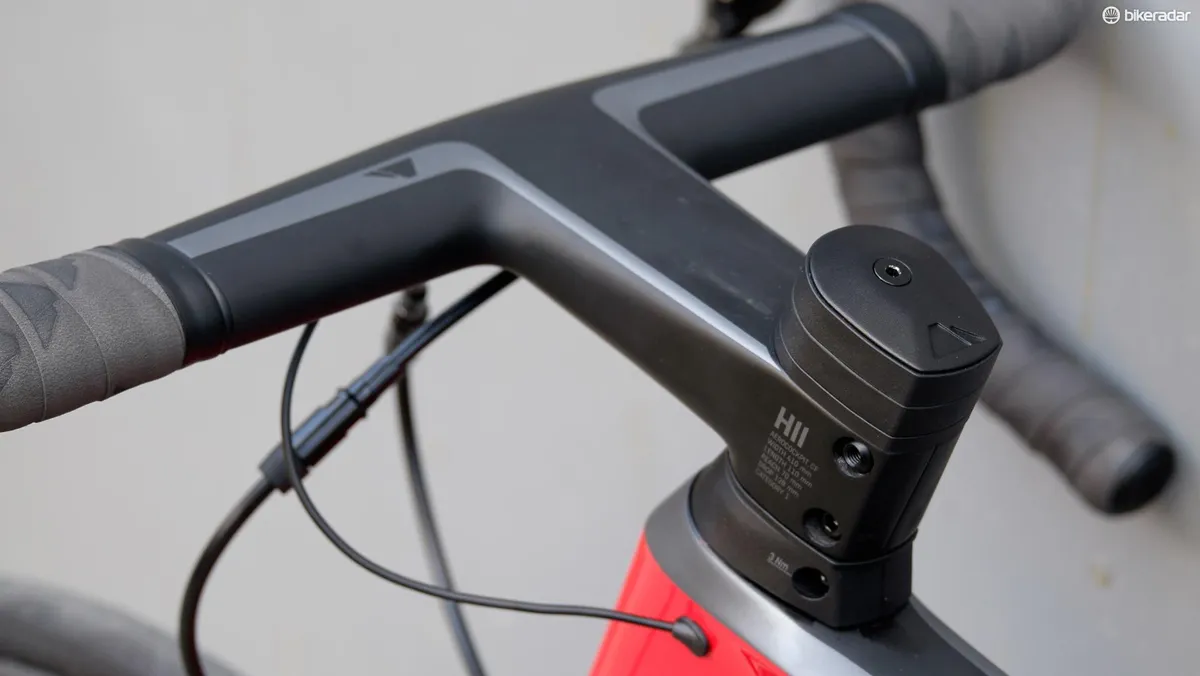
Braking is the job of Shimano’s BR-RS805 brakes, which bite onto 160mm IceTech rotors for all but the smallest 2XS frame size (which uses 140mm rotors).
These are controlled by Shimano’s ST-R785 Di2 shifters, which thanks to a lack of mechanical gubbins, have slender ergonomics that the non-Di2 hydraulic parts cannot match.
The Aeroad’s disc brakes are paired to disc wheels — 62mm deep Reynolds Strike components to be exact. These tubeless-ready carbon clinchers feature a 17mm internal width along with DT Aero spokes.
The Continental Grand Prix 4000S II tyre setup is particularly interesting, with a narrower 23mm tyre up front and wider 25mm rear, all in the name of aero.

Canyon’s clever VCLS seatpost integrates neatly in to the rest of the frame and secures via a single bolt thanks to an integrated seat clamp. Above sits Fizik’s angular Arione R5 saddle complete with manganese rails.
This size large test bike tipped the BikeRadar scales at 7.86kg/17.32lbs.
The Aeroad will soon be handed over to our colleagues at Cycling Plus magazine, who will put it through its paces and deliver a full review.
